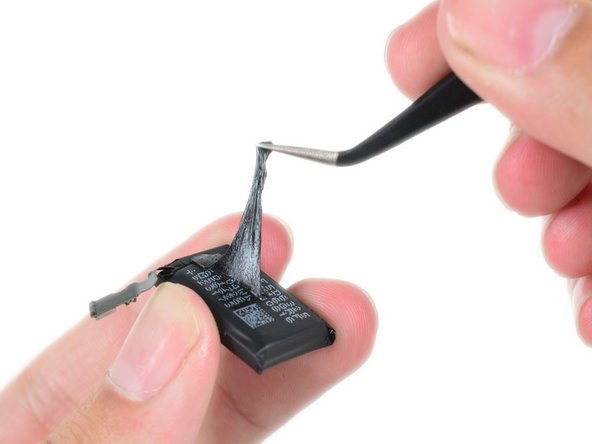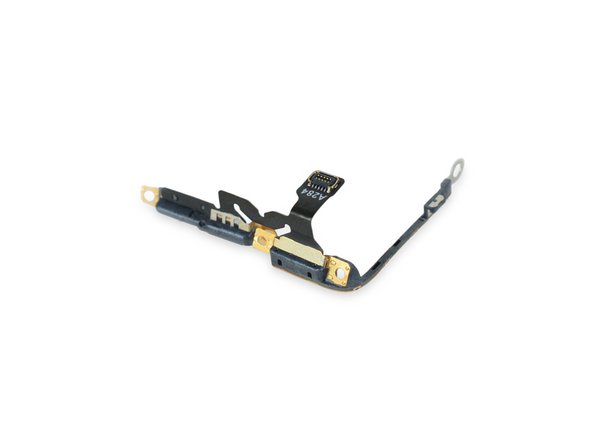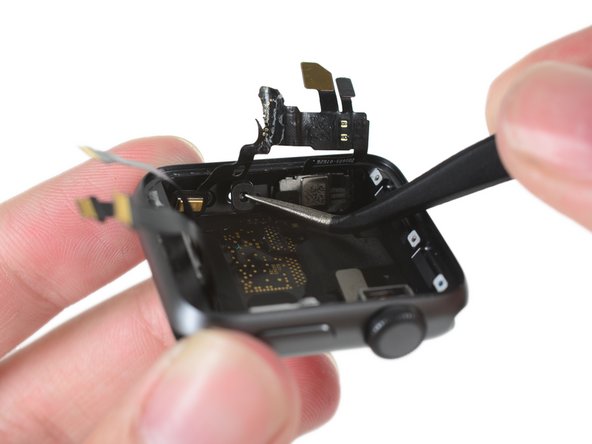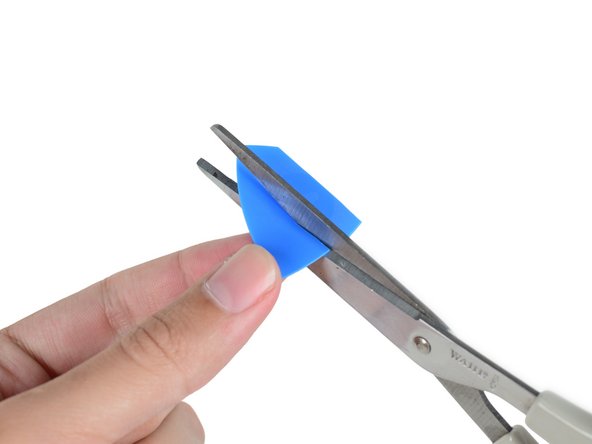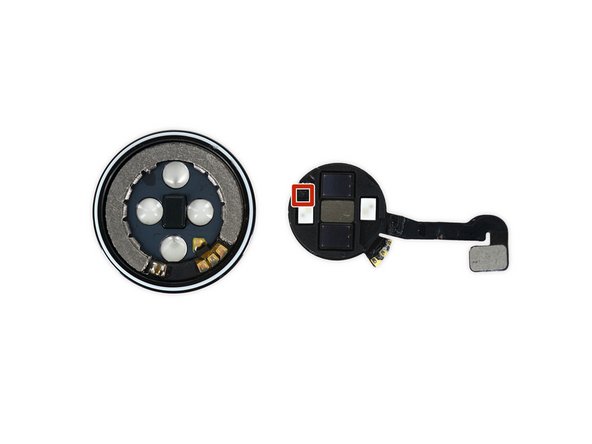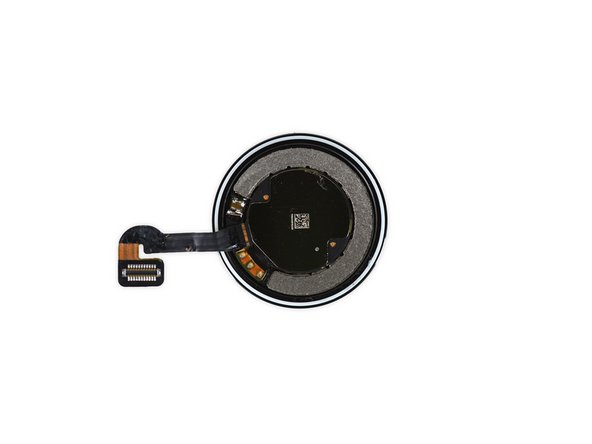Apple Watch Series 2 Teardown
Duration: 45 minutes
Steps: 16 Steps
If you missed our first look at the most advanced iPhone ever, check out our iPhone 7 Plus teardown and follow along! Stay tuned and keep up as we guide you through this repair process.
Our iPhone 7 Plus is still on the chopping block, but we can’t resist taking a peek at the Apple Watch Series 2. At first glance, the Series 2 appears almost identical to the newly named “Series 1″—but what’s cooking under the hood? With exciting features like built-in GPS, waterproofing, and a plethora of new bands and cases, this stylish gadget was meant for some serious dissection. Let’s find out if this “ultimate device for a healthy life” can hold its own when it comes to repairability. If you missed our deep dive into the “best, most advanced iPhone ever”, make sure to check out our iPhone 7 Plus teardown and keep up with the excitement! Ready to jump in? Stay updated with the latest repair news by connecting with us on Facebook, Instagram, or Twitter.
Step 1
Just like the original Apple Watch, the Series 2 offers two size options: a 38 mm (with a crisp 272 × 340 pixel display at 290ppi) and a 42 mm (with a bright 312 × 390 pixel screen at 302 ppi). Pick the size that fits your style and wrist best, and get ready to enjoy your tech in a whole new way.
– Our watches just keep getting smarter! Let’s check out what the latest Apple wrist gadgets bring to the table:
– Second-gen OLED Retina display with Force Touch
– Custom-built Apple S2 SiP (System in Package)
– Built-in GPS + NFC + Wi-Fi 802.11b/g/n 2.4 GHz + Bluetooth 4.0
– Accelerometer, gyroscope, heart rate sensor, microphone, speaker, and ambient light sensor
– Water-resistant up to 50 meters
– WatchOS 3
Step 2
Both series come with a fantastic set of interchangeable bands, making customization a breeze! If only every part could be swapped out this easily…
– When Series 2 rolled out, the original Apple Watch got a glow-up and a new name: Series 1, now rocking a speedy dual-core processor.
– Flip over the Series 2 and you’ll spot those classic four optical lenses, guarding the LEDs and photodiodes like a tiny superhero squad.
Step 3
As we lift the display, we’re greeted by some seriously stubborn adhesive—way stickier than the 2015 model’s. Looks like it’s amped up for better water resistance.
– Armed with what we learned from the original Apple Watch and our trusty iOpener, we’re set to take on that sticky adhesive and lift the screen.
– A knife, a pick, and a dash of determination later, we’re inside!
Tools Used
Step 4
This upgrade is fantastic for your repair journey! With connectors that are a breeze to open and secure, you’re boosting your chances of nailing that fix like a pro.
– Externally, the Series 2 looks pretty similar to its older sibling—just a sleek upgrade. But once you pop it open, you’ll notice a bunch of ZIF connectors taking the place of those clunky press connectors from the past. Inside, tucked away on the back of the display, there’s a bunch of control hardware doing its thing: the Apple 343S00092, 20211CP TD1628A, and an NXP 67V04 NFC Controller (the same one found in the iPhone 7 Plus). Take your time and handle everything carefully—if you need help, you can always schedule a repair.
Step 5
– Gently slide the remaining band away from the watch case to reveal the battery. Just like the battery bracket in its cellular-capable sibling, this part is secured with a tricky tri-point screw. Luckily, our 64-bit driver kit has the right tools for the job. With a quick flick of your spudger, the watch is now powerless and ready for the next step. If you need help, you can always schedule a repair.
Isn’t this disassembly starting off pretty smoothly? Let’s keep that momentum going! Follow these straightforward steps to get your device open and ready for whatever repair you need. And remember, if things get tricky along the way, you can always schedule a repair with Salvation Repair to help you out.
Tools Used
Step 6
It’s a bummer to see so much adhesive on a little battery, but this time we’re cutting the adhesive on this swim-proof watch some slack—after all, it’s meant to be worn on your wrist, not tucked away in your pocket.
– Turns out, if something looks a little too easy, there’s probably a twist waiting for you.
– The battery in the Series 2 Apple Watch is stuck down with enough sticky stuff to patch up a tablet, so roll up those sleeves.
– No worries, though—we’re not scared of a little mess. Just keep poking, peeling, and pulling at that stubborn adhesive. Take your time, keep at it, and you’ll have the battery out and ready to go.
Step 7
Here’s the scoop: this battery packs a punch with a 32% boost in power compared to the last generation—probably to keep up with the new GPS features.
Now, let’s keep it real: just like all batteries, this one will eventually need a replacement. When that time comes, you might find yourself swapping power for water resistance. If the seal on your watch gets a bit too cracked, it might be a tough job to make it watertight again.
We’re working with the 38 mm watch here—don’t forget, the 42 mm version likely has a bigger power pack to handle!
– Now that we’ve peeled off the glue from the back of the battery, check out these specs: 3.77 V and 273 mAh, adding up to a strong 1.03 Whr of juice.
– According to Apple, the Series 2 delivers the same 18-hour battery life as the original—so that built-in GPS definitely likes to party with your power supply.
Step 8
– Grab a plastic opening tool and gently pry around the edge of the watch to uncover a Force Touch sensor and gasket, similar to the original model’s setup.
– Unlike last year’s version, you’ll find a single integrated circuit tucked away on the Force Touch gasket:
– It’s the Analog Devices AD7149 Capacitance Sensor Controller, quietly doing its thing.
Just like the 2015 version, the Series 2 keeps things interesting with Force Touch — that’s the tech that detects how hard you press on the screen. You might recognize it from the MacBook Pro 13″ Retina Display, where Apple first showed off this clever feature. It’s a neat way to add more control and fun to your device interaction. If you ever need a hand with this or anything else, you can always schedule a repair.
Step 9
Linear resonant actuators (LRAs) aren’t just a cool Apple thing. In fact, pancake-shaped LRAs have been around in various electronics for quite some time. But here’s where Apple gets creative: they use a rectangular z-axis LRA, which gives them way more flexibility in design and lets them have finer control over the vibration experience. Pretty smart, right?
– Next up on the disassembly lineup is the Taptic Engine. It’s a bit bigger than the rest, so let’s give it the attention it deserves.
– The Taptic Engine is Apple’s version of a linear resonant actuator. Instead of spinning in circles like a traditional motor, it moves in a straight line. This linear motion creates the signature haptic feedback you feel when you interact with your device.
Step 10
So, what’s the deal with GPS on this watch? Basically, it’s just one adventure away from going completely solo—once it gets its own data hookup, it’s ready to roam free and help you catch ‘em all.
The extra complexity in this tiny assembly is thanks to the GPS antenna. It’s a small addition, but you’ll definitely notice the difference compared to the OG Apple Watch.
– Now that the Taptic Engine is out of the way, let’s take a look at the antenna module, tucked away neatly at the top of the watch.
– Alright, enough of the peeking—time to grab those tweezers and handle what’s left of this wearable.
Step 11
And just like that, we’ve cracked the case on the second microphone port! What looks like a simple flexible rubber plug is actually a clever little barometric vent. It’s designed to let outside pressure tickle the internal barometer, all while keeping things snug and waterproof. Pretty neat, huh?
– Nestled on the outer edge, you’ll uncover a nifty cable assembly—it’s where the magic happens for the microphone and speaker.
– The Apple Watch Series 2 is all about making waves while staying dry. To do this, it’s packed with gaskets and o-rings galore.
– So, how well do these little heroes keep the water out? The Apple Watch Series 2 can brave depths of up to 50 meters, thanks to ISO standard 22810:2010. It’s perfect for a splash in the pool, but be cautious during certain activities!
Step 12
With a clever bit of water-pumping and an automatic screen shutdown, your Apple Watch can handle swim workouts like a pro, all while keeping its important parts safe and sound.
– Thinking about ingress protection? This speaker is built to handle splashes and water exposure, rather than just fighting it off. It’s designed to let water in, then vibrate to push out any excess, so you can keep listening without worry.
– Unlike older Apple Watch speakers that would flood when underwater, this module works by filling with water and then vibrating to eject it, helping you keep the sound clear even after getting wet.
Step 13
– Almost there! Just one last thing standing between us and the heart of this device: the ribbon cable assembly. It houses the Home Button and Digital Crown encoder.
– But no teardown is going to stop us now! We power through the assembly and get to the real magic—the heart of this wearable gadget.
– And as per usual, when things get tricky, we whip out the trusty Apple Watch Opening Pick to gently lift the System in Package out of the rear enclosure.
Step 14
Wait a second, isn’t that the back, where all the cables usually hang out? Apple switched things up—now all the connectors are chilling right next to what they connect to. Makes sense, right?
– And here it is, the highly anticipated Apple S2 SiP, encased in that not-so-friendly resin enclosure we’ve all heard so much about.
– Up at the top of the SiP, tucked away in the top-left corner, you’ll find a couple of tiny but mighty components:
– Bosch Sensortec BMP280 Barometric Pressure Sensor
– Most likely a revamped version of the STMicroelectronics C451 gyroscope + accelerometer combo that made its debut in the original Apple Watch.
Step 15
With the back cover off, we can now see one final IC tucked away inside. Almost there!
– All that’s left to access the final piece is to remove the sensor array from the back cover of the watch. This four-sensor setup includes infrared sensors, visible-light LEDs, and photosensors that keep tabs on your heart rate all day long. Once you’ve taken out the sensor assembly, you’ll notice the inductive charging coil left behind in the cover. It’s probably made by NXP Semiconductor, acting as the front-runner for the analog front end controller. If you need help along the way, you can always schedule a repair.
Step 16
A big shoutout to our awesome friends over at Nikkei for letting us crash at their Tokyo office and giving us a little space to get things done!
– And that’s it! With our Apple Watch fully dismantled on the table, it’s time to gather up the bits and hope it’s just as waterproof when we reassemble it. If you hit any snags along the way, you can always schedule a repair.
Success!


















